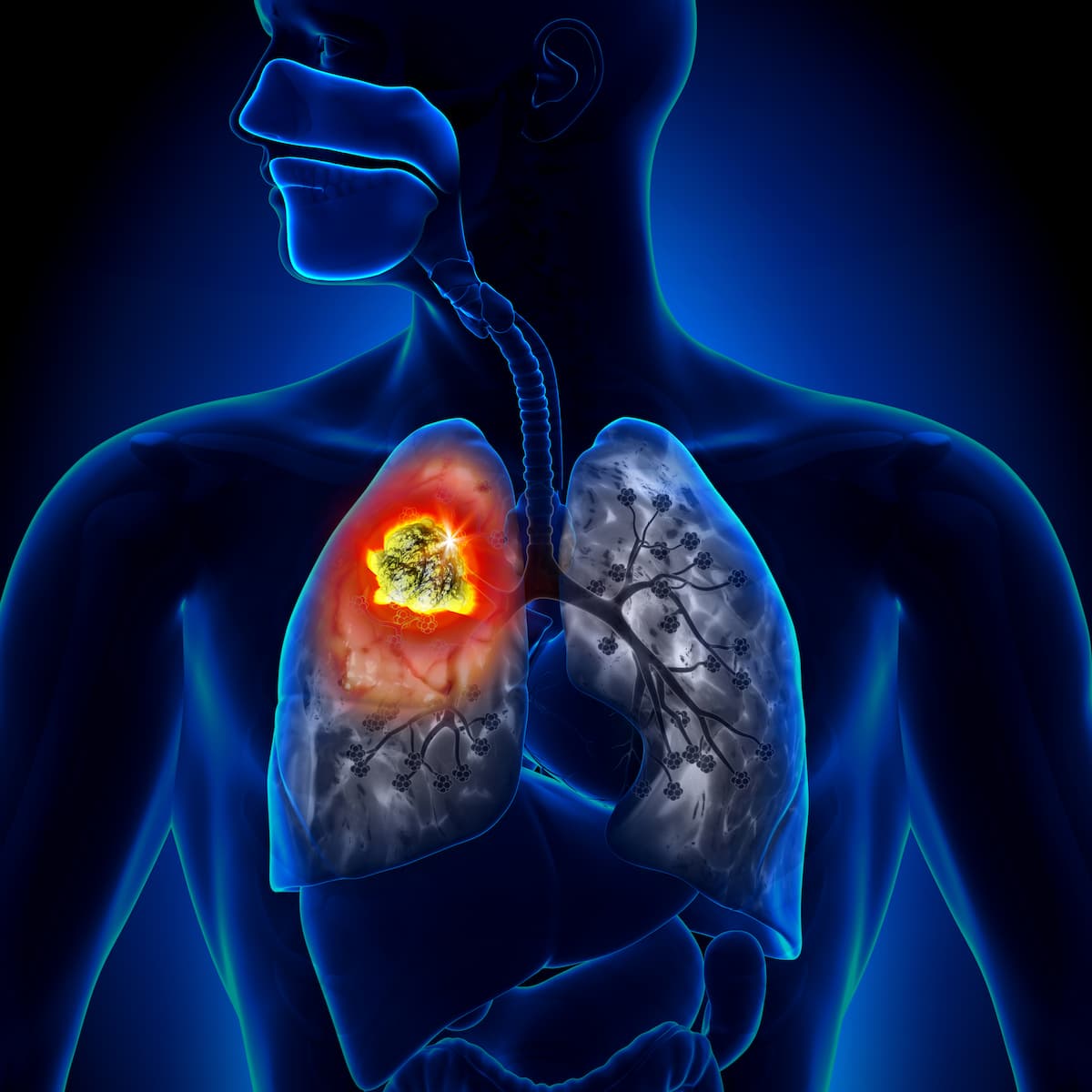Obrixtamig Plus Topotecan Shows Tolerability, Efficacy in Advanced ES-SCLC
The frequency and severity of adverse effects for the combination were consistent with expected safety findings for each individual agent.
Efficacy data from the trial revealed that among 23 evaluable patients, the unconfirmed ORR was 70%, including 4% of patients experiencing a complete response and 65% experiencing partial responses.

The addition of topotecan (Hycamtin) to obrixtamig (BI 764532) exhibited tolerability and promising preliminary efficacy in patients with advanced extensive-stage small cell lung cancer (ES-SCLC), according to findings from the phase 1 DAREON-9 trial (NCT05990738) from a poster presented at the 2025 American Society of Clinical Oncology Annual Meeting.
Safety data from the trial revealed that among 25 patients treated with escalating doses of obrixtamig plus topotecan, the frequency and severity of adverse effects (AEs) for the combination were consistent with expected safety findings for each individual agent. Common any-grade AEs included thrombocytopenia and/or decreased platelet count (92%), anemia (72%), neutropenia and/or neutrophil count decreases (68%), fatigue (60%), cytokine release syndrome (CRS; 48%), and lymphocyte count decreases (40%).
The most common grade 3 or 4 AEs included neutropenia and/or neutrophil count decreases (60%), thrombocytopenia and/or decreased platelet count (52%), lymphocyte count decreases (32%), anemia (24%), and fatigue (16%). Furthermore, no grade 3 or 4 CRS events were observed in the study. No grade 5 AEs were reported, and 1 case of febrile neutropenia was observed.
Additionally, no treatment-related neurologic events occurred at grade 2 severity or higher. Two grade 1 instances of muscle spasms were reported. No patients discontinued obrixtamig due to treatment-related AEs.
“Obrixtamig plus topotecan was tolerable, with no unexpected toxicities. AE frequency and severity for the combination were consistent with the expected safety findings for obrixtamig and topotecan as monotherapy,” lead author Martin Wermke, MD, group leader of the Thoracic Oncology Group, professor for experimental cancer therapy, and head of the Early Clinical Trial Unit and the Trial Management National Center for Tumor Diseases Dresden (NCT/UCC) Clinical Trial Center, wrote in the presentation with study coinvestigators. “Preliminary efficacy data for the combination show promising efficacy in [second-line] SCLC [and beyond], warranting further investigation of the combination treatment.”
Patients with histologically or cytologically confirmed SCLC in the phase 1 trial initially received obrixtamig via step-up dosing, followed by 3 escalating doses, with topotecan given per label. Treatment persisted until disease progression or for up to 36 months.
Patients enrolled in the study had a median age of 65 years (range, 38-78), and 68% of patients were men. The median number of treatment cycles was 4 (range, 1-13), the median treatment exposure was 2.6 months (range, 1.0-8.5), and the median number of prior lines of treatment was 1 (range, 1-3), with 20% of patients previously treated with more than 2 prior lines.
A total of 92% of patients received prior treatment with a PD-1 or PD-L1 inhibitor. Furthermore, 52% of patients had an ECOG performance score of 0.
The primary end point of the trial was to determine the maximum tolerated dose or recommended dose for expansion based on dose-limiting toxicities. Secondary objectives included the dose tolerability of obrixtamig. Other exploratory end points included the objective response rate (ORR) and duration of response (DOR) of obrixtamig in combination with topotecan by RECIST v1.1 criteria.
Efficacy data from the trial revealed that among 23 evaluable patients, the unconfirmed ORR was 70% (95% CI, 47%-87%), including 4% of patients experiencing a complete response and 65% experiencing partial responses. A total of 17% of patients experienced stable disease as best response, with a disease control rate of 87% (95% CI, 66%-97%).
Additionally, in 13 patients with 2 or more postbaseline tumor assessments, the confirmed ORR was 69% (95% CI, 39%-91%). Across all dose levels, the median DOR was not reached.
Reference
Wermke M, Alt J, Bozorgmehr F, et al. DAREON-9, a phase Ib study of obrixtamig plus topotecan in patients with advanced small cell lung cancer (SCLC): interim analysis. J Clin Oncol. 2025;43(suppl 16):8094. doi:10.1200/JCO.2025.43.16_suppl.8094